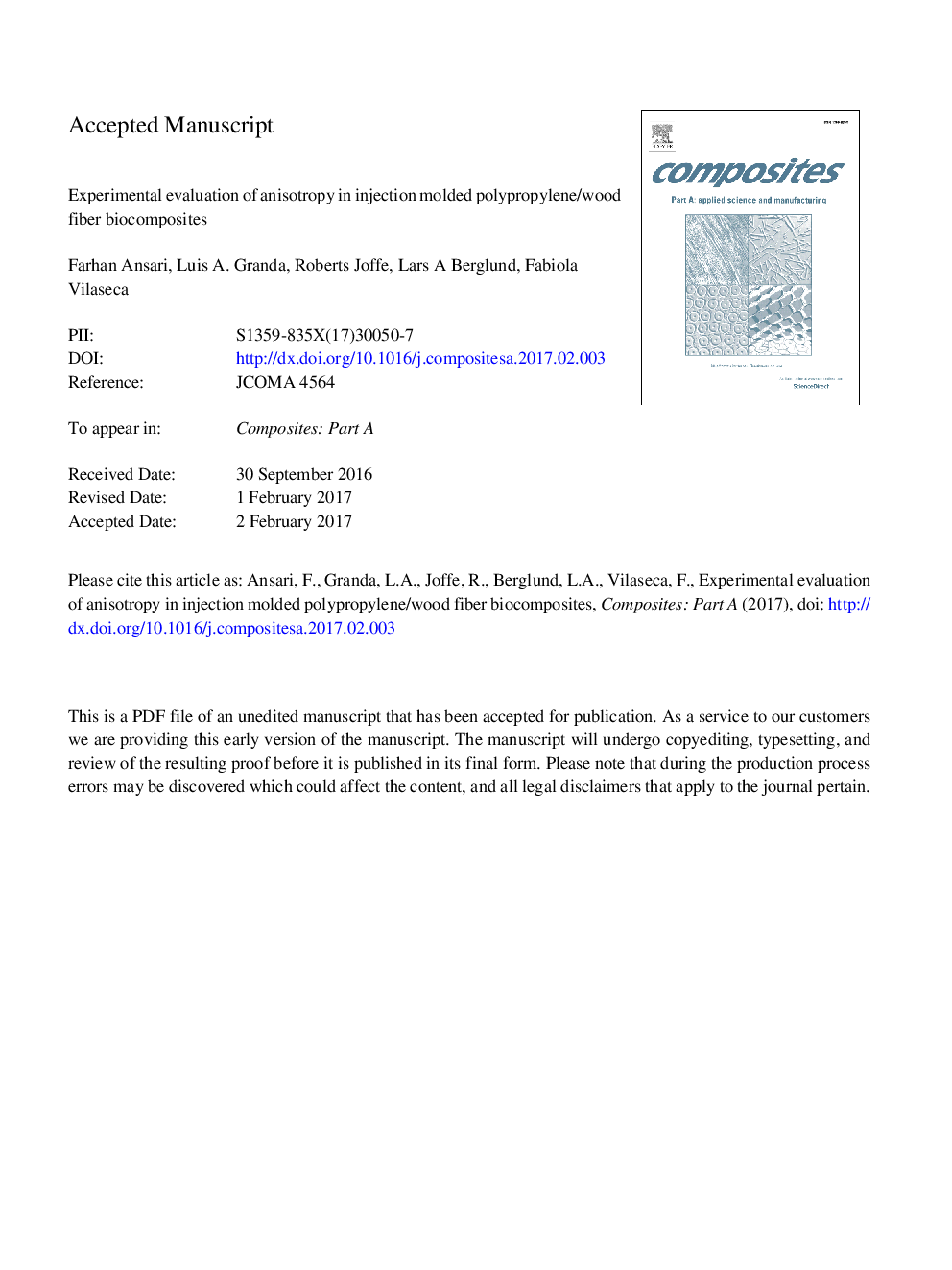| Article ID | Journal | Published Year | Pages | File Type |
|---|---|---|---|---|
| 5439595 | Composites Part A: Applied Science and Manufacturing | 2017 | 33 Pages |
Abstract
Although the anisotropy of wood fibers is reasonably well established, the anisotropy of injection molded wood fiber composites is not well understood. This work focuses on chemo-thermomechanical pulp (CTMP) reinforced polypropylene (PP) composites. A kinetic mixer (Gelimat) is used for compounding CTMP/PP composites, followed by injection molding. Effects from processing induced orientation on mechanical properties are investigated. For this purpose, a film gate mold was designed to inject composites in the shape of plates so that specimens in different directions to the flow could be evaluated. Observations from tensile tests were complemented by performing flexural tests (in different directions) on discs cut from the injected plates. SEM was used to qualitatively observe the fiber orientation in the composites. At high fiber content, both modulus and tensile strength could differ by as much as 40% along the flow and transverse to the flow. The fiber orientation was strongly increased at the highest fiber content, as concluded from theoretical analysis.
Related Topics
Physical Sciences and Engineering
Materials Science
Ceramics and Composites
Authors
Farhan Ansari, Luis A. Granda, Roberts Joffe, Lars A Berglund, Fabiola Vilaseca,
